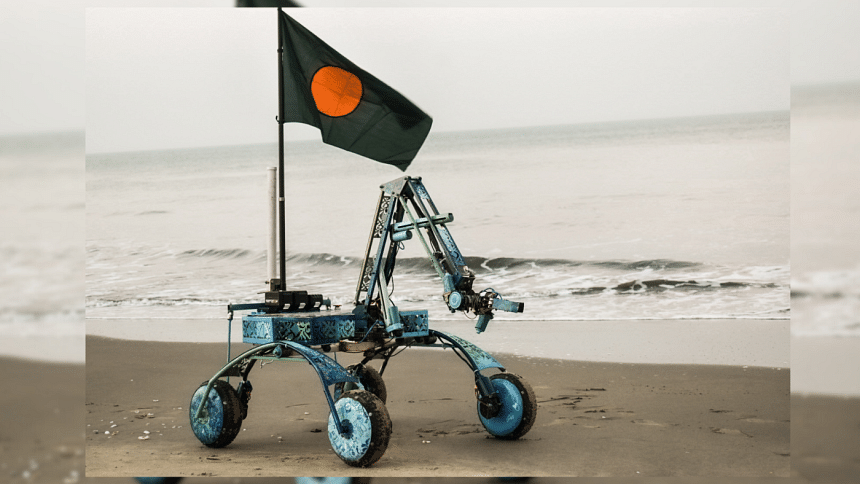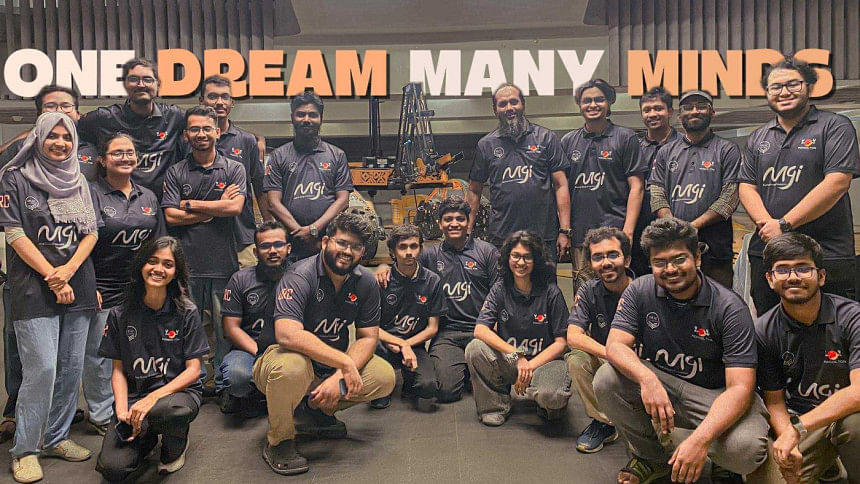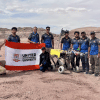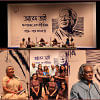Inside BRACU’s Mongol Tori rover: Hypersonic

Carl Sagan once wrote about the Pale Blue Dot, a single speck of dust suspended in a sunbeam, carrying everything we have ever loved. Mongol Tori Hypersonic is our speck, our imprint on the universe. From the labs of BRAC University (BRACU) to the red rock terrain of the Utah desert, this Bangladeshi-built machine carved an extraordinary path in one of the most prestigious student robotics competitions in the world: the University Rover Challenge (URC) 2025. In a field dominated by Cornell, Columbia and elite global institutions, Mongol Tori Hypersonic emerged as the 8th best rover globally and 2nd in Asia
From dawn till midnight, team members rotated between operating the rover, repairing control systems, managing real-time telemetry, and documenting findings – all in the spirit of simulating extra-planetary missions.
Team Hypersonic of Mongol Tori
With students hailing from multiple departments of BRACU, the Mongol Tori Hypersonic team was a multidisciplinary unit of undergraduate engineers, astrobiologists, designers, and mission planners led by a core executive team and supervised by dedicated faculty members.
The team carried a cultural ethos, which materialised through the name "Mongol Tori" (literally "Mars Chariot"). It is a symphony of intelligent systems with four-wheel drive and independent rocker-bogie suspension adapted from NASA's own rover architecture, which tackles rocky Martian-style terrain with passive shock absorption and minimal power use. The CNC-cut chassis, made from aerospace-grade aluminium alloy, was optimised through SolidWorks and Ansys simulations and then field-tested across rural Bangladesh to replicate URC terrain.
"We started with theoretical rocker-bogie models, but field trials really helped us tune the real-world performance," says Marzanul Momenine, Co-Team Lead overseeing Controls and Mechanical Systems.
Inverse kinematics for the 6 Degrees of Freedom (6DOF) robotic arm, often costing over BDT 5 lakh, was implemented using recycled brushed DC motors for under BDT 20,000 taka showcasing resourceful engineering thanks to contributions from ANM Noor of the Autonomous Team.
"It's very important to keep the rover in our control," notes Md. Rafid Khan, Co-Team Lead overseeing communications.
"Getting analogue feeds to work reliably without any jitter was one of the toughest challenges," adds Akid Anis, Controls and Software Sub-Team Lead.
On the science end, Mongol Tori acts as a mini environmental lab. "Some of the biochemical results genuinely surprised us. Balancing the centrifugal mechanism with analysis wasn't easy," shares Md Abir Hasan Siddique Rahi, Astrobiology Sub-Team Lead.
For the time being, the team is prototyping microbial growth assays for future missions.
"Problems are just steps in the process. If we stay steady, the solutions come—In Sha Allah," says Mohammed Jesan, Team Lead.

Hypersonic's Triumph
With the support of Meghna Group of Industries (MGI) who stepped in as the core sponsor, the team could finally acquire essential components, fund their Mars Desert Research Station (MDRS) expedition, and secure the logistics necessary to travel to and operate in the United States.
Held in the rugged terrains near Hanksville, Utah, URC 2025 featured 38 finalist teams from across the globe. Competing in missions like Search and Rescue, Equipment Servicing, Science Analysis, Delivery Tasks, and Autonomous Navigation, the rovers were made to face harsh weather and strict time constraints. Despite the odds, Mongol Tori scored an outstanding 317.87 points, placing 8th globally and 2nd in Asia, just behind United International University (UIU) of Bangladesh, which placed 6th.
The BRACU team performed exceptionally well in the Science Mission and Autonomous Navigation, two of the most conceptually demanding categories. These accomplishments placed Bangladesh shoulder-to-shoulder with long-established tech powerhouses.
Team Advisor and professor Dr Md Khalilur Rhaman of BRACU reflected on the team's efforts at MDRS during URC 2025, "What truly excites me is how our team has built an inclusive and supportive culture throughout this journey. Seeing that in action at MDRS was inspiring."
"We've had good systems before, but this year, relentless testing made the difference," says Technical Advisor Suhail Haque Rafi.
Mentors Al Mahir Ahmed and Sanzim Khan remark that while the road was far from smooth, the team's persistence and ability to adapt under pressure made all the difference.
Unlike any rover before, Mongol Tori Hypersonic wears its heritage proudly. Jamdani-inspired motifs were etched into its CNC-cut aluminium shell, while the illustrations on the wheels carry symbols from Bangladesh's culture and revolutionary history.
"Watching The Wild Robot made us realise Hypersonic couldn't just be a machine. It had to carry something human. Like Roz, who learned to belong, this rover needed to hold a piece of us," says the design team.
Just as cave paintings told stories of civilizations past, perhaps one day, on Martian soil, this rover will whisper: Bangladesh was here.
Rifah Tasnia Alam is a contributing member of the Design team of Mongol Tori.

 For all latest news, follow The Daily Star's Google News channel.
For all latest news, follow The Daily Star's Google News channel. 








Comments